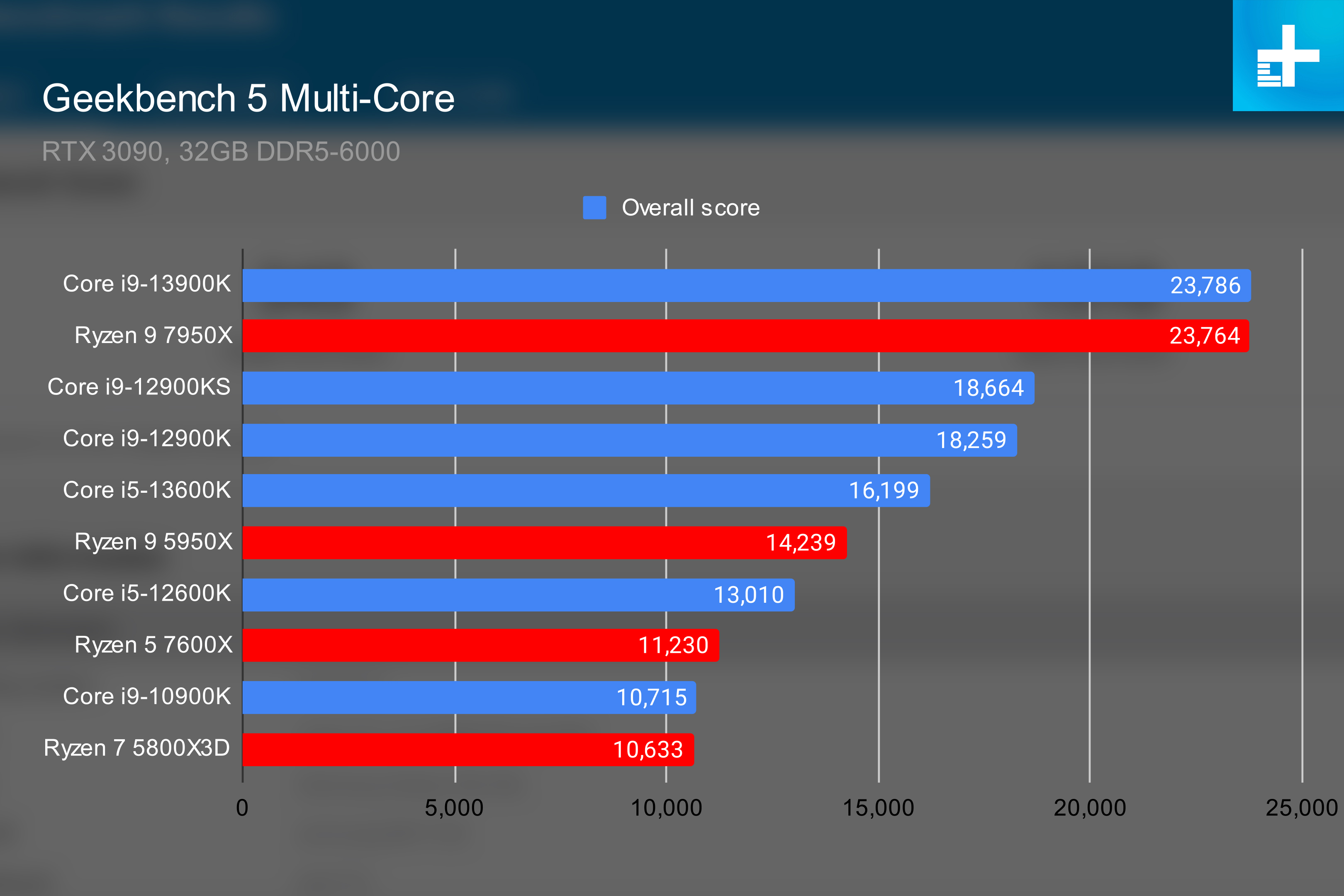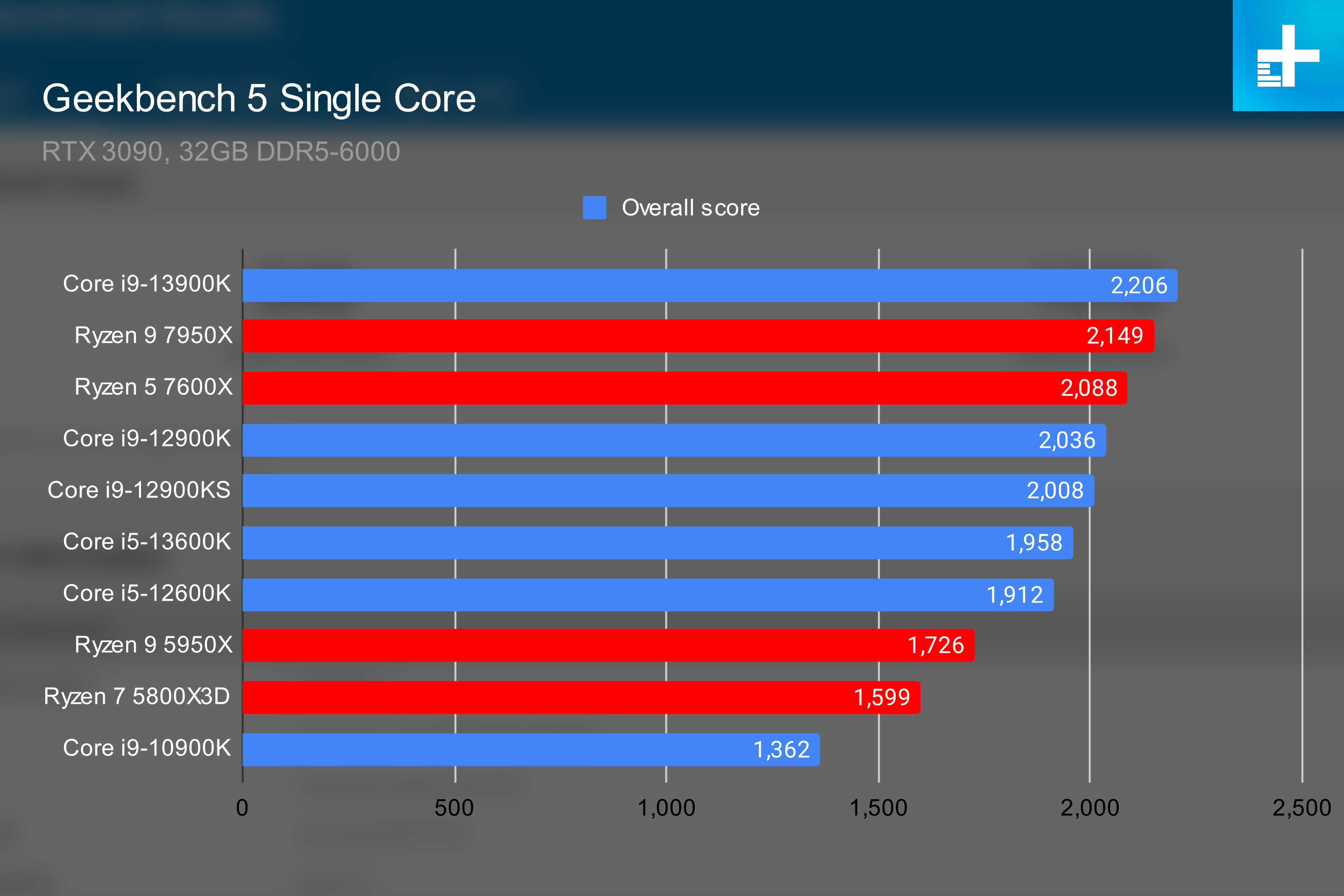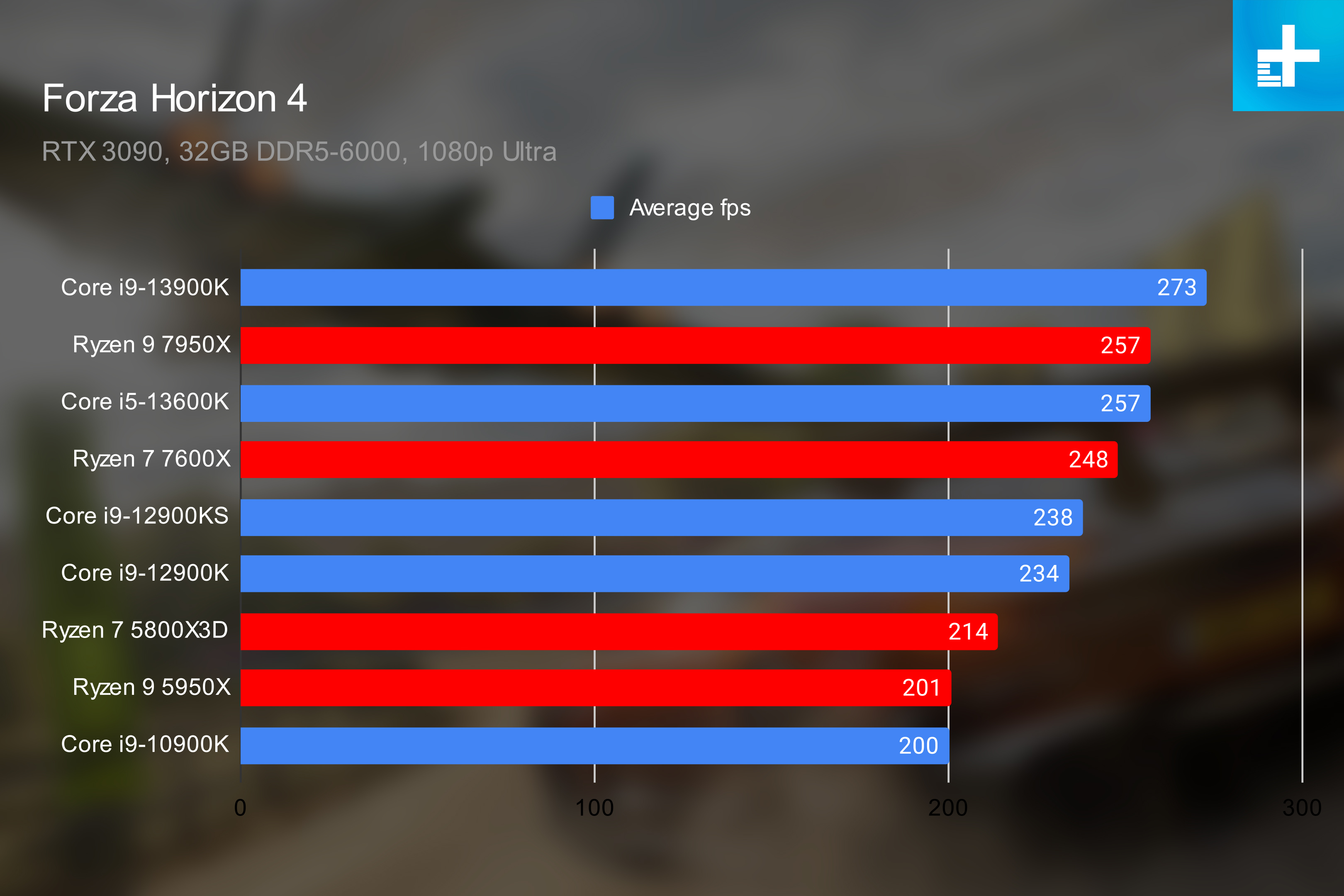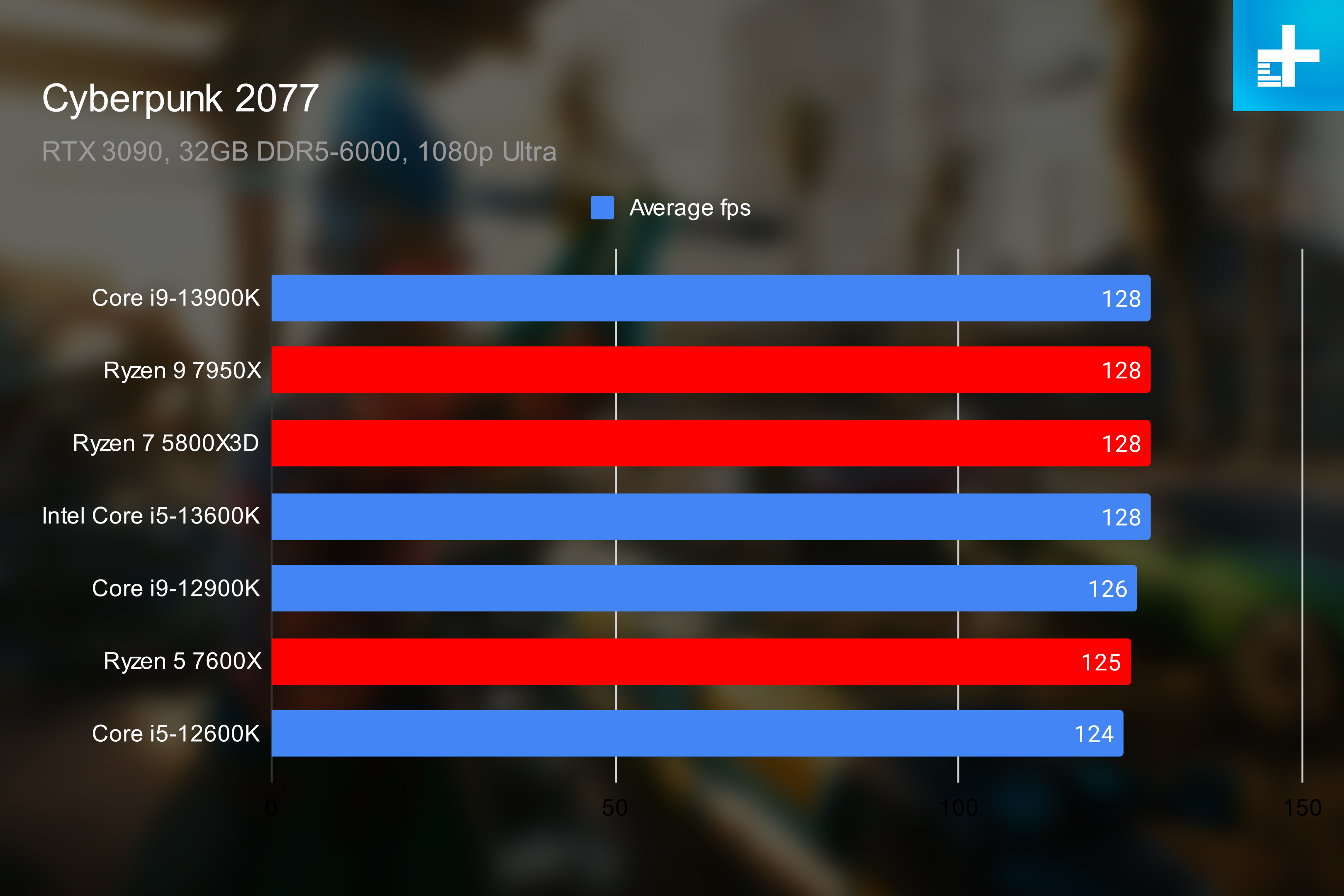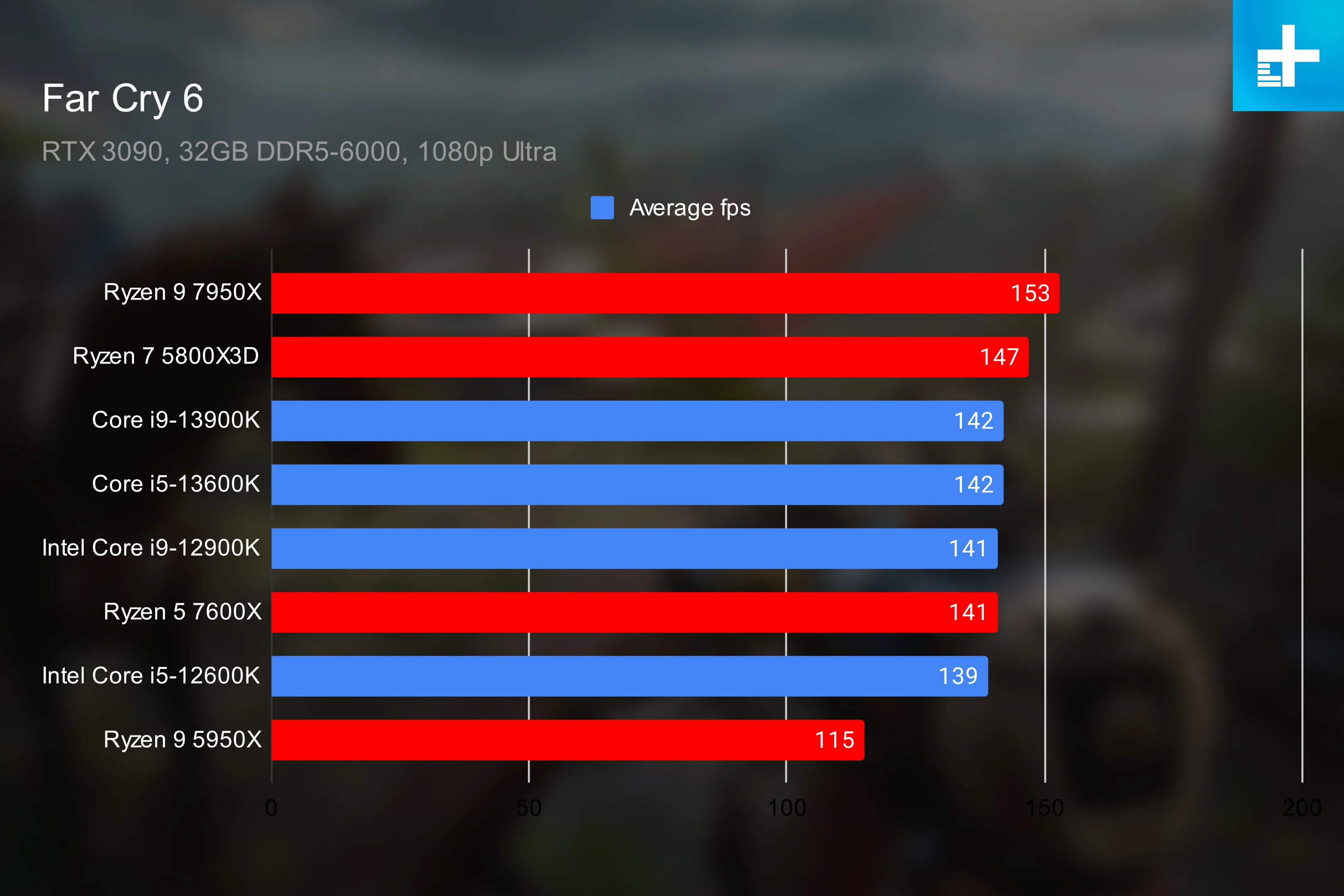Picking between AMD and Intel is one of the main considerations whenever you build a new PC. Like macOS versus Windows, the AMD versus Intel rivalry is one of the greatest debates for PC enthusiasts, and right now, we are in the middle of a neck-and-neck race that’s bound to get even more heated.
Now that AMD has launched its Ryzen 7000 CPUs and Intel its 13th-generation Raptor Lake processors, it’s time to revisit the dynamic between AMD and Intel in 2023. Forget the head-to-heads of yesteryear. This is the AMD versus Intel battle as it exists today.
AMD vs. Intel: a brief history
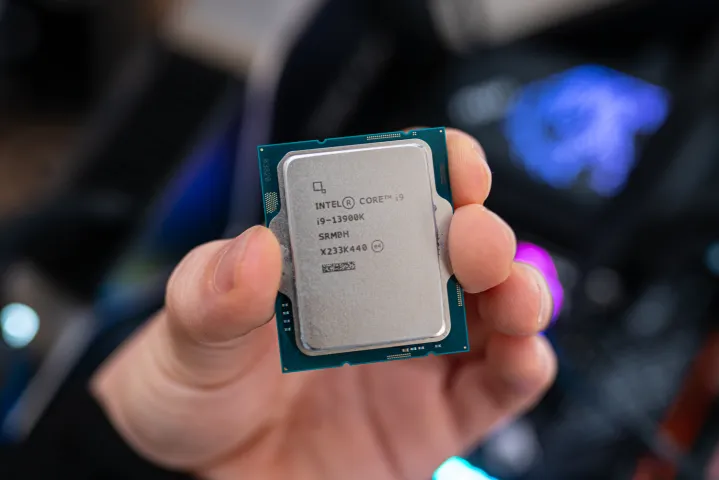
AMD and Intel are two of the most iconic names in PC building and for good reason. For decades, they’ve been duking it out to offer the fastest, most capable, and most feature-rich processors for gamers, casual web browsers, and professionals alike. They’ve gone back and forth a few times over the years, with AMD launching groundbreaking designs and Intel responding with revolutionary chips of its own, but where Intel maintained a strong grasp on flagship performance between 2005 and 2015, AMD really turned things around with the launch of its Ryzen processors.
Debuting in 2017, these chips brought the fight to Intel in a more dramatic fashion than AMD had managed in over a decade, and ever since then, the competition has only increased. Today, Intel and AMD are neck and neck with their latest designs, offering the greatest CPU performance we’ve ever seen in mainstream components. With more cores, higher clocks, and new features, the best processors from Intel and AMD are something to get very excited about.
Desktop processors: a price comparison

AMD and Intel both have wide ranges of processors that are all well worth considering when it comes to your next upgrade. The latest models are AMD’s Ryzen 7000 and Intel’s 13th-generation Raptor Lake. These processors offer up to 24 cores, clock speeds that are approaching 6GHz, and more cache than even some of the fastest CPUs of previous generations could dream of.
Here are all the latest mainstream CPUs from AMD and Intel:
AMD
| Ryzen 9 7950X | Ryzen 9 7900X | Ryzen 7 7700X | Ryzen 5 7600X | |
| Cores/threads | 16/32 | 12/24 | 8/16 | 6/12 |
| Cache (L2+L3) | 80MB | 76MB | 40MB | 38MB |
| Base clock | 4.5GHz | 4.7GHz | 4.5GHz | 4.7GHz |
| Boost clock | 5.7GHz | 5.6GHz | 5.4GHz | 5.3GHz |
| TDP | 170W | 170W | 105W | 105W |
| Price | $699 | $549 | $399 | $299 |
Intel
| Core i9-13900K | Core i7-13700K | Core i5-13600K | |
| Cores/threads | 24 (8+16)/32 | 16(8+8)/24 | 14(6+8)/20 |
| Cache (L2+L3) | 68MB | 54MB | 44MB |
| Base clock | 3GHz (P-core), 2.2GHz (E-core) | 3.4GHz (P-core), 2.5GHz (E-core) | 3.5GHz (P-core), 2.6GHZ (E-core) |
| Boost clock | Up to 5.8GHz | Up to 5.4GHz | Up to 5.1GHz |
| TDP | 125W/253W | 125W/253W | 125W/181W |
| Price | $590 | $410 | $320 |
AMD and Intel also offer credible options with their last-generation Ryzen 5000 and 12th-gen Alder Lake, although those aren’t as fast and don’t support all of the latest features. Both also have very cheap, budget options that can cost as little as $50, but they’re only recommendable for those building the most lightweight of PCs.
Which company makes the fastest processors?
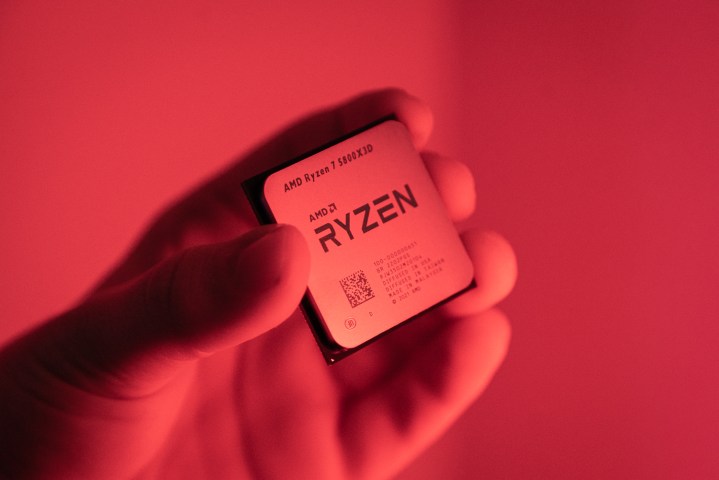
Intel and AMD have excellent processors for gaming and productivity tasks like video editing and transcoding. While you will find the best bang for your buck around the midrange of both camps (Intel’s Core i5-13600K and AMD’s Ryzen 7700X are particular standouts), the flagship CPUs from both AMD and Intel offer the best performance in gaming and more demanding multithreaded workloads.
The Intel Core i9-13900K has 24 cores (8 + 16) and supports up to 32 threads, while the best AMD CPU uses a more traditional 16-core and 32-thread layout. Both chips are neck and neck in demanding games and trade blows in workplace applications. Where more full cores can be leveraged, the 13900K steals the top spot, while applications that rely on more powerful individual cores lean toward AMD.
You don’t need to buy the best to get a great CPU for gaming or work, though. At around the $300 mark, Intel’s Core i5-13600K is arguably the best bang-for-the-buck CPU of its generation, offering amazing gaming and productivity performance for a much lower price. AMD can compete on performance, but its 7600X falls behind, and the 7700X is more expensive, so Intel steals the value in the midrange for now.
If you’re focused mainly on gaming, AMD’s new 3D V-Cache processors are worth a look. You can see how they perform in our Ryzen 7 7800X3D review and Ryzen 9 7950X3D review.
There are also last-generation CPUs worth considering, too. AMD’s Ryzen 5000 series are still very capable processors, with its 5800X3D being amazingly competitive with even the latest and greatest in games. It is a dead end for upgrades, though, as the Ryzen 7000 needs a whole new motherboard and memory configuration. The Intel 12th-generation CPUs are great picks, too, with the 12600K being another great standout in the midrange and a clear upgrade path to the 13th generation when you want it.
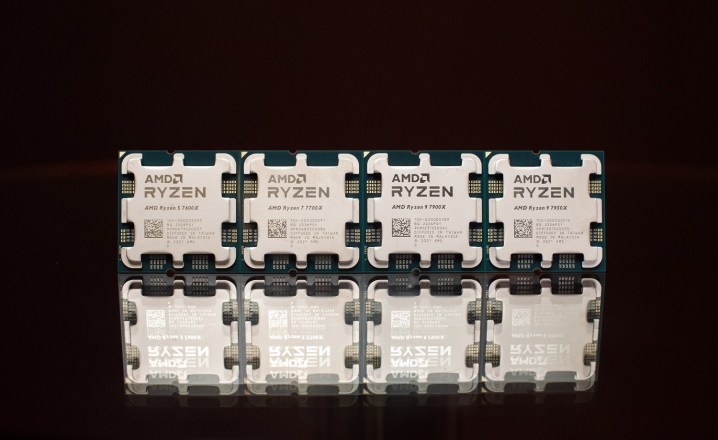
Both companies also offer extensive ranges of budget CPUs, though you’ll be stuck with the previous generation for now. On Intel’s side, there’s the excellent quad-core Core i3-12100F for around $100, while AMD’s six-core Ryzen 5 5500 is about $120 and offers comparable performance in games.
If you’re planning on building a cheap system with no discrete graphics, Intel is probably your best option. Although AMD’s new Ryzen 7000 CPUs do have onboard graphics and AMD’s previous-generation APUs are relatively capable, they aren’t as affordable. You’d spend $150 on a Ryzen 5 5600G or about $120 on an Intel Core i3-12100.
High-end desktop processors
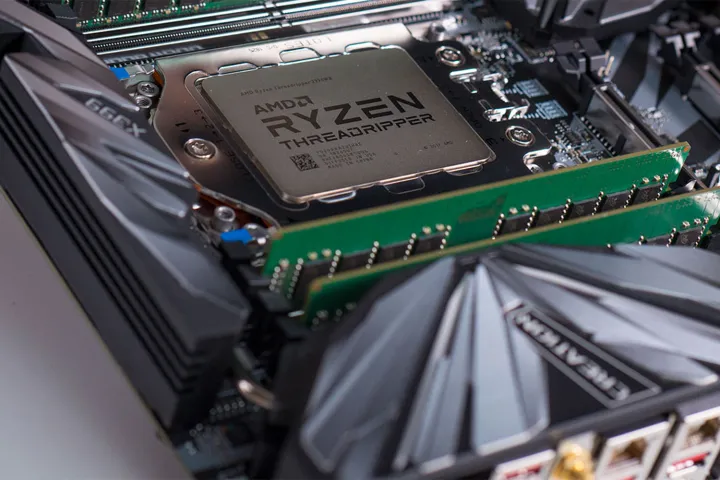
If you want to use your PC for heavy video editing at high resolutions or perform intensive video transcoding or CAD work, then you need heaps of processing power across plenty of cores. The best mainstream CPUs are great options for that, but if you need even more than the 24 cores of the 13900K, then you might want to consider a high-end desktop (HEDT) CPU.
Although Intel does have HEDT CPUs, like the 18-core Core i9-10980XE, they’re all severely outdated and easily beaten by the latest high-end mainstream CPUs. Instead, if you need extra cores and CPU power, AMD’s Threadripper Pro range of Ryzen 5000 CPUs is your best bet.
AMD’s Threadripper CPUs offer 24, 32, and even 64 cores with support for double that number of simultaneous threads, all while maintaining clock speeds around the 4.5GHz mark. If your software can make use of all those extra cores, AMD’s Threadripper CPUs offer unparalleled performance outside of obscenely expensive server CPUs, easily outstripping the Intel competition. They also support a greater number of PCI-Express lanes — 128 versus just 44 on the Intel alternatives — making them more suited to larger storage arrays.
You’ll pay thousands for the 64-core 5995WX, but if you can accelerate your work and therefore earn more money by using one of these CPUs, it could be well worth it. However, if you can wait until later in 2023, AMD is set to launch its Ryzen 7000 Threadripper CPUs, which should be vastly more capable. If they’re anything like the Zen4 Epyc server CPUs from AMD, we might see our first 96-core Threadripper CPU.
Laptop processors

The laptop market is a different story. Most notebooks you’ll find are based on an Intel processor of various generations and integrated graphics, but AMD CPUs are growing more common, and the latest Ryzen 6000 and upcoming Ryzen 7000 mobile CPUs offer impressive performance and efficiency.
Intel’s latest laptop CPUs are based on its Raptor Lake generation, and you should be able to find laptops equipped with 13th-generation CPUs in pretty much every segment. Alder Lake comes in four flavors: the low-power U models, the middle-power P models, and the high-power H and HX models. Generally speaking, the more power, the faster the CPU, but there are some H and HX CPUs with fewer cores than P CPUs, so performance will depend on the tasks you are throwing their way, as much as the CPUs themselves.
Ryzen mobile CPUs come in different flavors, just like Intel’s:
- C — low power
- U — efficient performance
- HS — efficient high performance
- H/HX — highest performance
Typically, you’ll find U- and P-type CPUs in lighter, thinner laptops with a focus on good battery life, decent integrated graphics, and overall satisfactory performance. H and HX CPUs are primarily for gaming and workstation laptops (read our MSI GT77 Titan review for an example), and they’ll usually be paired with a powerful AMD or Nvidia GPU.
AMD is rolling out its Ryzen 7000 generation for laptops now, which are currently dominating in high-end performance as you can read in our Asus ROG Strix Scar 17 review. We’re still waiting on mainstream chips to see how they stack up, though.
Both AMD and Intel offer credible performance for work and play, and there are many more considerations to make when buying a laptop than the CPU, so looking at individual model reviews is a must.
Should you buy AMD or Intel?
For everyday web browsing, watching Netflix, and answering emails, Intel and AMD CPUs will give you excellent performance right out of the box. There are certain tasks, though, where one company’s options perform better than the others.
If you’re looking to work with your processor performing intensive multithreaded tasks like video editing or transcoding, or heavy multitasking activities with tens of browser tabs open, Intel’s laptop CPUs are the fastest, but AMD’s are close behind and often offer better battery life. On desktop, it’s a toss-up, with both AMD and Intel delivering incredible multithreaded performance. You’ll get more bang for your buck with Intel’s midrange options, but at the top end, either camp is great.

If you’re looking to game on your desktop, both AMD and Intel will serve you well. At the high end, the Core i9-13900K is the best CPU overall, but the 7700X and 7900X are more affordable AMD alternatives. Likewise, the Intel Core i5-13600K is almost as good as all three and much cheaper, but don’t discount the last-generation AMD Ryzen 7 5800X3D, as it’s competitive with all of them — even if it doesn’t give you a good upgrade path with its last-generation design.
If you’re still unsure which chip is best for you, check out our guide on buying a CPU for more help.
Editors' Recommendations
- Intel said AMD’s Ryzen 7000 is snake oil
- AMD is valiantly keeping its word to gamers
- Gigabyte may have just leaked AMD next big release
- AMD is slowing down at the worst possible time
- Intel still thinks ARM is an insignificant threat



